Welcome to the Intense Clash of Komodo Dragons Over an Innocent Goat’s Fate.
A primordial drama unfolds in the Indonesian islands‘ rugged, volcanic landscapes. A Komodo dragon, the largest lizard on earth, locks eyes with an unsuspecting goat. The silence of the wilderness is pierced by the tension between these two unlikely adversaries.
Key Points
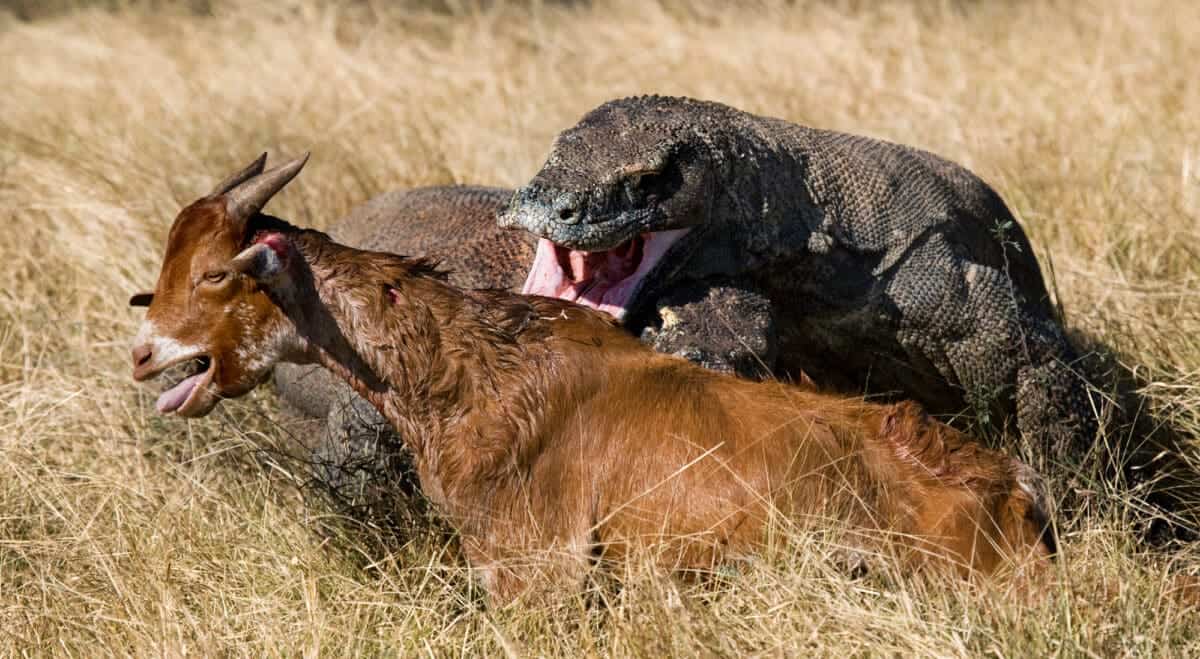
- A Komodo dragon and a goat engage in a dramatic clash.
- A goat becomes the unexpected focus of a Komodo dragon’s pursuit, showcasing the raw intensity of these encounters.
The Massive Komodo Dragon
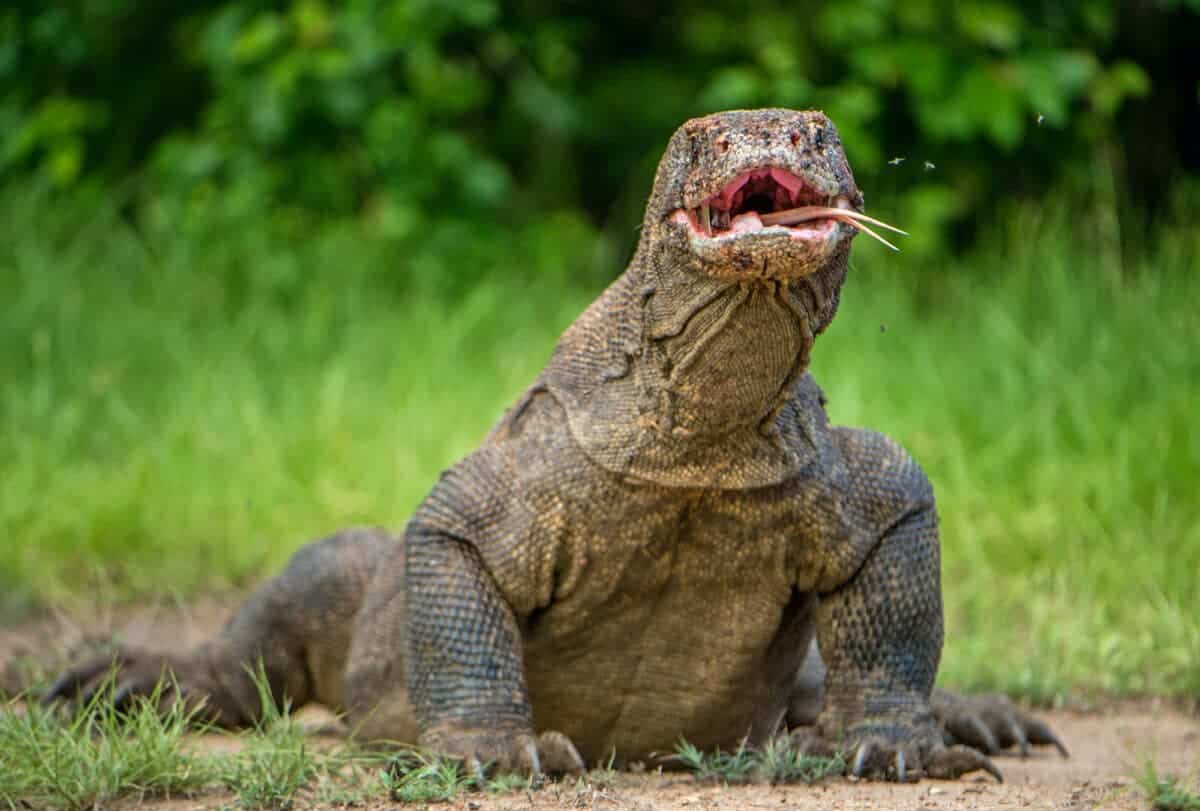
The Komodo dragon, a relic of ancient times, is a spectacle to behold. Its colossal body, spanning up to 10 feet and weighing a hefty 200 pounds, is a testament to the raw power encapsulated within this seemingly slow creature. A cloak of rough, mottled scales gives the Komodo an illusion of invincibility, further underlining its near-mythical status.
Contrary to its deceptive tranquility, the Komodo is a formidable predator, possessing speed, power, and stealth. As it slowly inches closer, its forked tongue flicks in and out, sampling the air for the scent of its prey. The goat, in contrast, is a symbol of innocence in this harsh world, an unwitting player in the Komodo’s dangerous game.
Goats don’t think that Komodo dragons are that fast
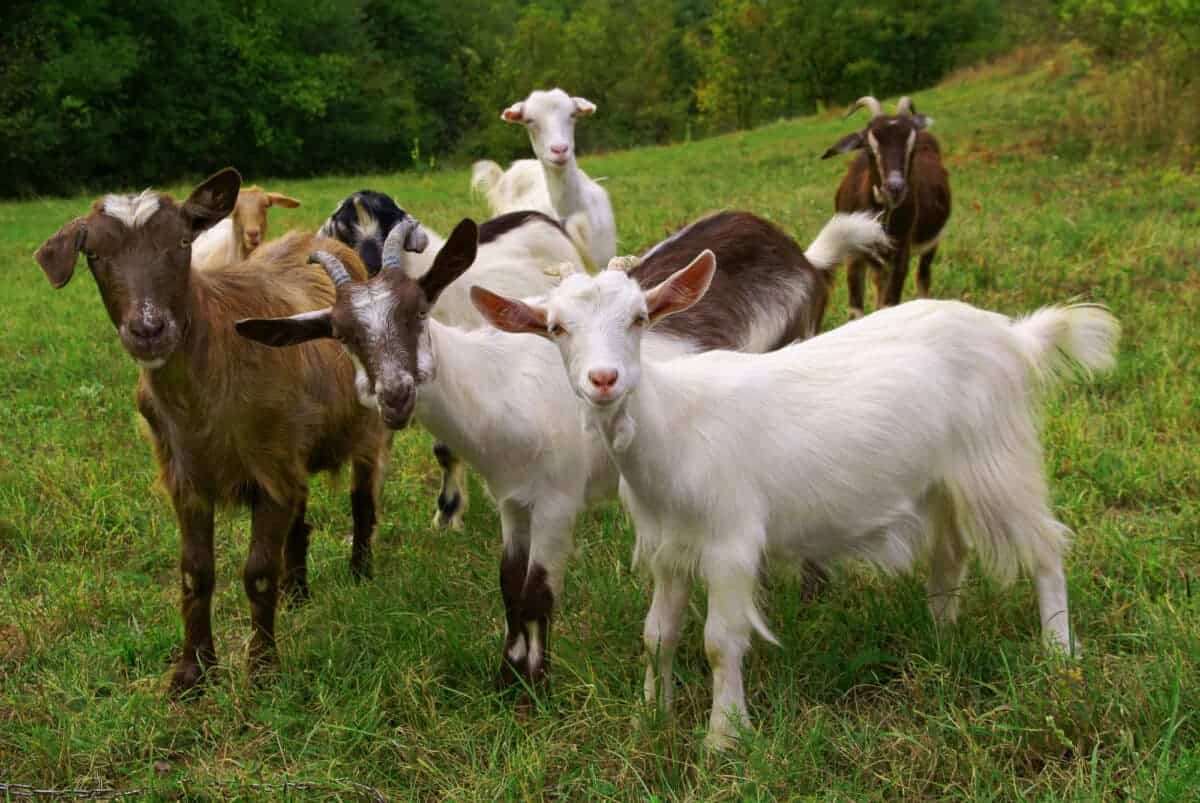
One sweltering afternoon, a solitary goat, oblivious to the lurking danger, grazes on the sparse vegetation dotting the landscape. Unseen in the shadow of a nearby rock formation, a Komodo dragon patiently waits, its eyes fixed on the unsuspecting goat. The dragon, an ambush predator, relies not on speed, but strategy and stealth, epitomizing the phrase “still waters run deep.”
In a sudden eruption of movement, the Komodo dragon lunges at the goat. The goat, caught off guard, is unable to flee in time. The dragon’s robust jaws clamp down on the goat, delivering a venomous bite. This venom, a potent mixture of toxins, triggers rapid blood loss, shock, and even paralysis, weakening the goat in a matter of moments.
Despite the venom coursing through its veins, the goat doesn’t attempt to escape, standing in defiance against its inevitable fate. The Komodo dragon, seizing the opportunity, begins to consume the goat, a macabre spectacle that is a stark reminder of the merciless laws of nature.
As the goat’s life ebbs away, the Komodo dragon continues its feast, unhurried and undisturbed. The following silence is a chilling testament to the Komodo dragon’s dominance in this harsh ecosystem, a silent whisper of the stark reality of survival. Having satisfied its hunger, the dragon retreats into the shadows, leaving behind the eerie stillness of a battlefield where only the strongest survive.
What are the differences between Komodo Dragons and Goats?
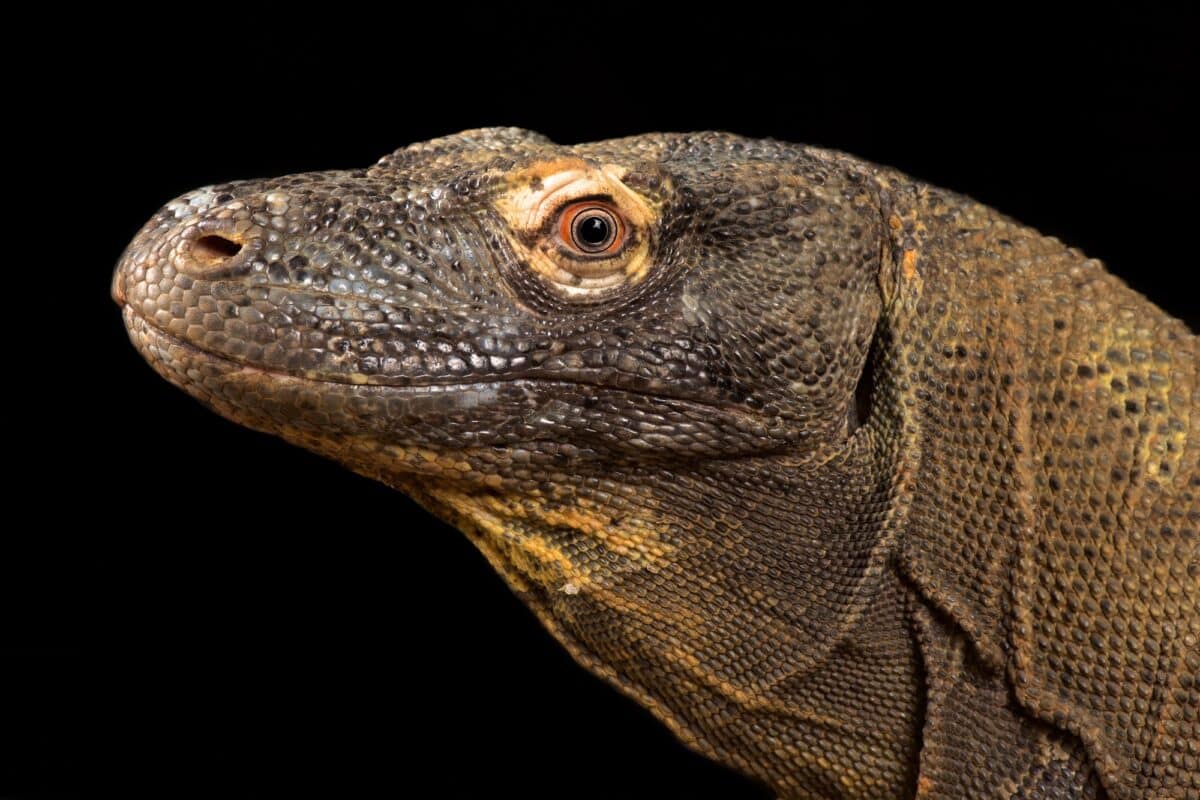
| Characteristic | Goat | Komodo Dragon |
|---|---|---|
| Kingdom | Animalia | Animalia |
| Class | Mammalia | Reptilia |
| Diet | Herbivorous (plants and grasses) | Carnivorous (meat, including deer, pigs, smaller dragons, and large water buffalo) |
| Size | 40-52 inches (at the shoulder) | Up to 10 feet in length |
| Weight | 100-300 pounds | Up to 330 pounds |
| Lifespan | 15-18 years | Up to 30 years |
| Predators | Wolves, coyotes, bobcats | No natural predators (apex predator) |
| Reproduction | Live births (typically 1-3 kids per year) | Oviparous (lays eggs, around 20 eggs in a clutch) |
| Special Abilities | Adapted to rugged terrains, good jumper | Venomous bite, excellent swimmer, capable of parthenogenesis |
| Habitat | Mountains, grasslands, deserts | Tropical forests, savannahs, and mangroves of the Indonesian islands |
Summary of the Komodo Dragon vs Goat

The Komodo dragon, also known as the Komodo monitor, is a master strategist in hunting, often employing an ambush approach. The goat had already fallen victim to the monitor lizard’s bite.
The lizard’s venom contains a potent anticoagulant, causing the prey to weaken due to substantial blood loss. Contrary to popular belief, the Komodo monitor isn’t particularly swift. Instead, it meticulously strategizes its hunts, showcasing its high level of intelligence for a reptile.
What is a Komodo Dragon?

The Komodo dragon is the largest living species of lizard, found on the Indonesian islands of Komodo, Rinca, Flores, Gili Motang, and Padar.
How Big Can Komodo Dragons Get?

Komodo dragons can grow up to 10 feet in length and weigh over 300 pounds, making them the heaviest lizards on Earth.
What Do Komodo Dragons Eat?

Komodo dragons are carnivorous and have a varied diet that includes deer, pigs, water buffalo, and even smaller Komodo dragons.
How Do Komodo Dragons Hunt?

Komodo dragons are ambush predators, using their strong legs and sharp claws to catch prey. They also use their powerful jaws and serrated teeth to deliver a lethal bite.
What is Their Role in the Ecosystem?
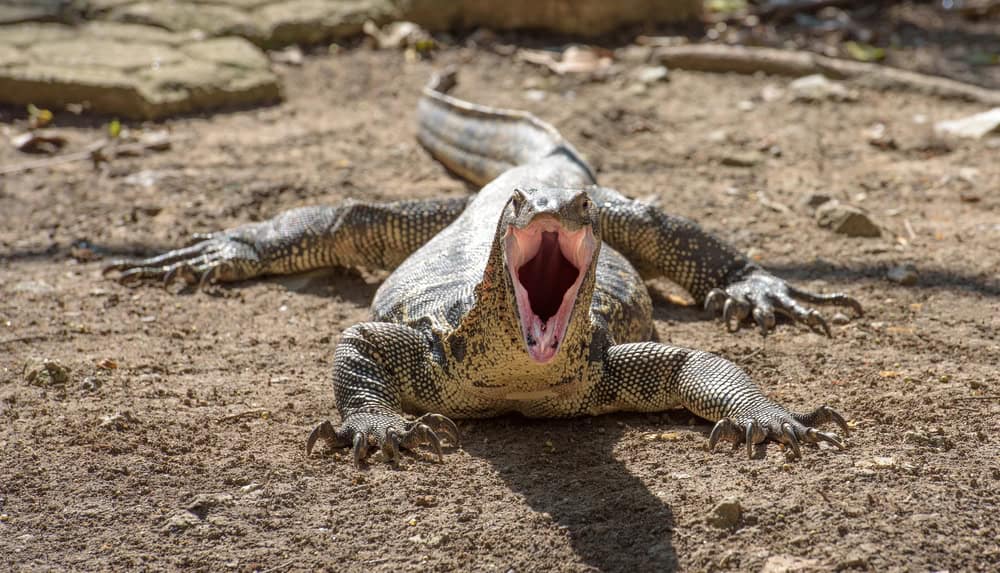
As apex predators, Komodo dragons help control the populations of their prey, maintaining a balanced ecosystem on the islands they inhabit.
How Do They Communicate?

Komodo dragons communicate through body language, such as head bobbing, and can also produce hissing sounds.
Can Komodo Dragons Swim?
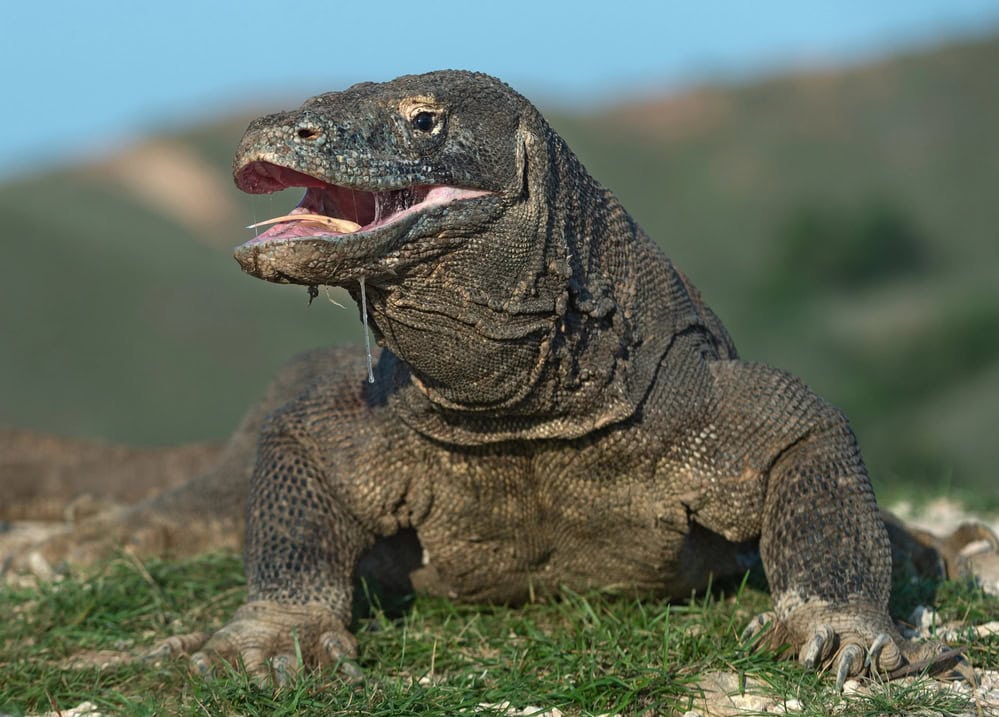
Komodo dragons are excellent swimmers and can swim between islands in search of food or mates, sometimes covering distances of several miles.
What is Their Conservation Status?

Komodo dragons are classified as vulnerable by the IUCN. They face threats from habitat loss, human activities, and natural disasters.
Are Komodo Dragons Protected?
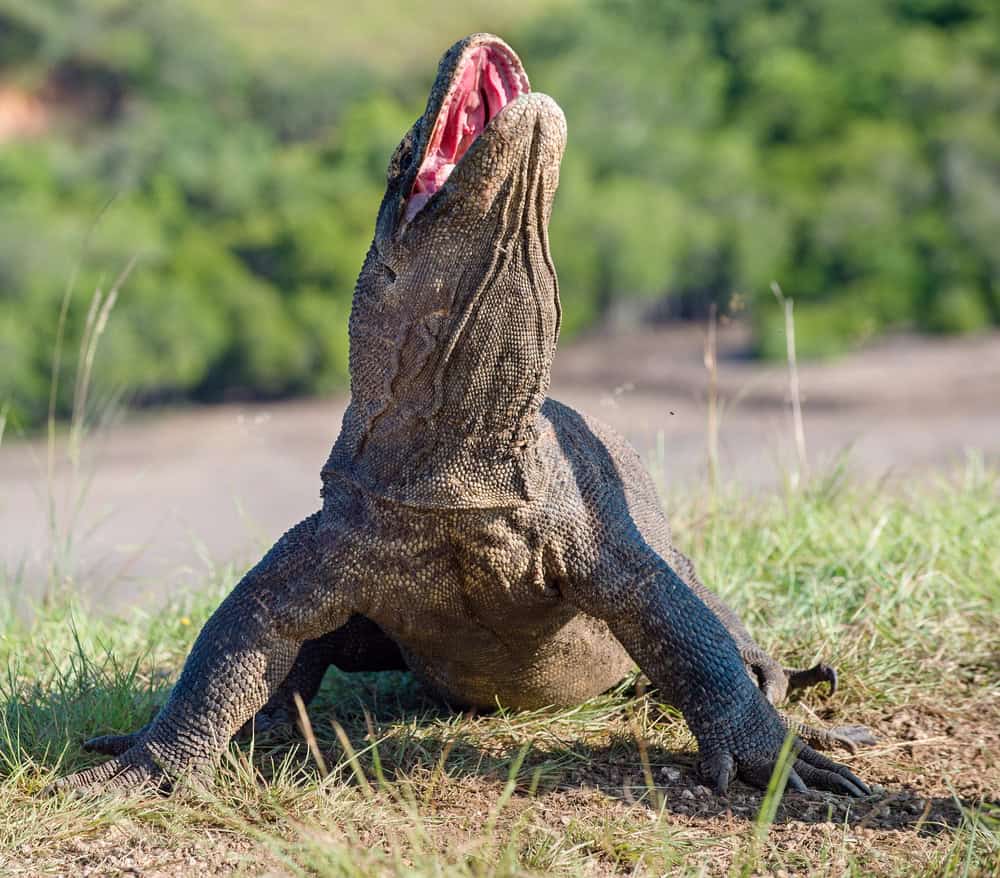
Efforts are being made to protect Komodo dragons through national parks and conservation programs. The Komodo National Park in Indonesia is a key sanctuary for these unique reptiles.
Also, look at Different Types of Lizards, the Great Monitor Lizard or all articles on Reptiles.
Join our Forum for free today!

- Top 10 Reasons You Should Consider Adopting an Animal From a Shelter - June 17, 2024
- Massive 25-Foot Anaconda Halts Traffic in Brazil Caught on Camera - June 16, 2024
- Unique Footage of 5 Bald Eagles Fight Midair Over Unlucky Fish - June 16, 2024

